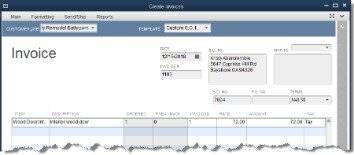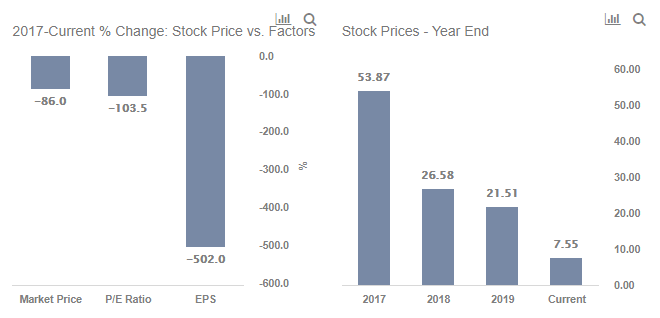Job Order Costing Accounting for Managers
- Bookkeeping
- 19 Ekim 2022
- Yorum yaz
- 30 kez görüntülendi

Content

With job costing systems, a project manager or accountant can keep track of the cost of each job, maintaining data which is often more relevant to the operations of the business. For budgeting purposes, businesses often apply a blanket overhead percentage to the project. Another option is to calculate a predetermined overhead rate using estimates of anticipated activity. These estimated overhead costs include factors like administration, depreciation of any equipment used, and cost of office space. Overhead is the most difficult cost to calculate, because you’ll need to rely on an approximation instead of a more exact figure.
Consultants use job costing to charge their clients by the number of hours they dedicated to the project, called billable hours. Because the predetermined overhead rate used by companies is purely based on estimates, the actual overhead cost incurred during the year may be higher or lower than the amount estimated. The time required to complete a job is shorter than the time required to complete a contract. But, the principles followed in job costing and contract costing is one and the same. Jobs are normally carried out in workshops while contracts are mostly executed in outside.
What Is a Predetermined Overhead Rate?
Business owners can use the same job costing techniques to evaluate past projects on a line-by-line basis. These evaluations carry over into the future, as it’s possible to see where costs might be reduced next time. Ajob costing system is used by companies that produce unique products or jobs. A job costing system is used by companies that produce unique products or jobs. Job Costing, as the name implies, allows companies to track the revenues and costs of each job.
Top 15 Matterport Competitors and Alternatives Business Strategy Hub – Business Strategy Hub
Top 15 Matterport Competitors and Alternatives Business Strategy Hub.
Posted: Fri, 03 Mar 2023 16:47:59 GMT [source]
Direct expenses are the costs that can be traced back to the spending of a specific department. These include expenses like design costs, tool maintenance and purchasing equipment that is directly used to manufacture the product. They’re listed under the COGS section in the income statement. For a construction business, this would include materials such as lumber, wiring, screws and more. You may choose to add a margin to these materials to cover other related costs including wastage or delivery fees. In a job costing system, each job or work order is of a specific nature.
Fulfill orders more efficiently. Try Zoho Inventory Today!
Similarly, administration, selling and distribution overheads are also estimated. Finally, a percentage of profit is added with total cost to estimate the price for job and tendered to the customer. The extent of percentage of profit is the policy matter of the management. This type of estimation is highly useful for submission of tenders and quotations. The job costing method falls under the category of specific order costing. Job costing means the process of identifying the total cost incurred for completion of job according to the specifications and instructions of customers.
No matter what business you are in, making a profit is most likely one of your forefront goals. Even one-person, internet-based businesses probably have a basic accounting ledger to record expenses, income, assets, and liabilities. Job costing accounting, then, is widely considered to be the most effective strategy to appraise the profitability of different elements of a company. Below, we offer a complete rundown on how job costing works, the advantages it offers, and the top features to consider when comparing the best job costing software on the market. Job Costing Process Costing How it works Assign costs to the delivery of individual jobs, products or services. Assign costs for projects that deliver many units of the same output.
What is the job costing and its characteristics?
Since I had to buy unique materials for the custom project, I know the puppy look-alike toys cost me $200 in direct material. Continuing the consulting business example, say one project required 300 direct labor hours. The overhead allocation is $600 ($2 overhead rate ✕ 300 direct labor hours).
- Business owners can use the same job costing techniques to evaluate past projects on a line-by-line basis.
- To calculate material costs, add all direct and indirect costs.
- Each job is distinguishable from other jobs, and direct costs can be clearly traced to each job.
- When the job is completed, the accounting department has all of the information necessary to total the costs involved in making this bike, thus knowing whether the initial price quoted was accurate.
- While the job is being performed, you need to maintain a job cost sheet to track the actual material and labor being used.
Your activity driver should be a measure used in every project and roughly correlates with overhead resources. It’s unlikely you’re tracking the kilowatt hours each project draws. Since it’s impossible to trace a project’s precise responsibility for your overhead costs, you calculate an overhead rate to split indirect costs among projects. Direct materials are all the raw materials that go into your product. Tools and cleaning supplies, on the other hand, are called indirect materials, which are included in overhead costs. Charging the right amount for your products and services is integral to building a profitable business, and that requires knowing your exact business costs.
What Is Job Costing? costing is a systemized way of tracking and monitoring production expenses, with each “job” representing an order from a customer. In this way, companies can produce larger or smaller quantities of finished goods while keeping production within predictable costs. Although the illustrated form lists the material cost, that will not always be the case. Sometimes, a business will not be particularly interested in letting employees see cost information, or cost information may not be readily available. In either case, the form will instead include a part or serial number. A subsequent clerical task will be to identify the cost of the particular parts that were put into production.
- If predicted costs aren’t in alignment, the accountant can give management fair warning to try and get the budget back on track.
- Process costing, on the other hand, breaks down costs over a given time frame, which is particularly useful when the cost of individual units or job outputs can’t easily be differentiated.
- Training must be on pace, or else both labor and material may waste and increase the cost.
- But in modern manufacturing, this can quickly become overwhelming.
- An alternative use is to see if any excess charges incurred can be charged to the customer’s bill.
- Job costing is an accounting tool that allows businesses to track costs by individual jobs.
From the total of $ 952,000, accountant deducts the cost of work in progress A and work in progress B. Both manufacturing and non-manufacturing acquire a job costing process. Provides separate accounts for each process, maintain the development of each job, to estimate the costs, when transitioning from one process to another process. Costs stay in the work-in-process account throughout the job. When the job is finally completed, they are transferred to the finished goods account.




Henüz yorum yapılmamış.